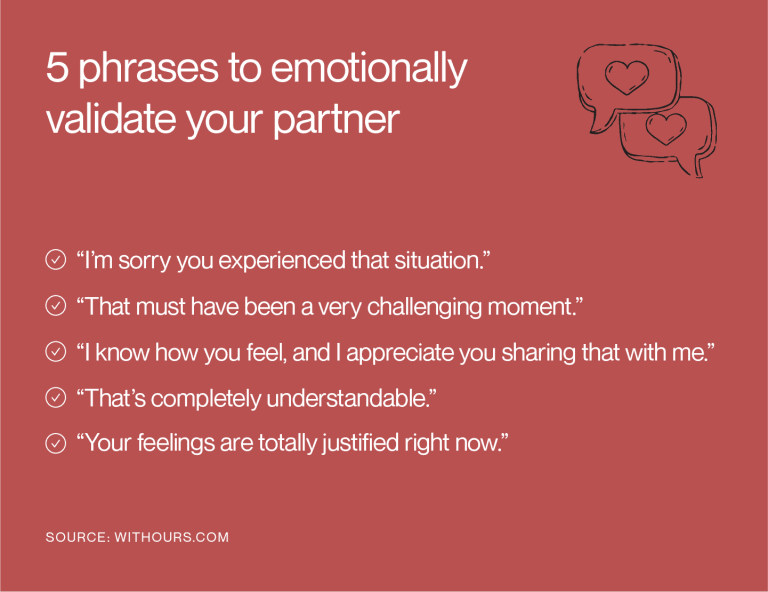Stereotyping Barrier in Communication
Stereotyping barrier in communication refers to the generalizations or assumptions about how people from different cultures, backgrounds, or groups communicate, behave, or think, which can lead to misunderstandings and conflicts in cross-cultural communication. These stereotypes create self-fulfilling prophecies as they constrain strangers’ patterns of communication and engender stereotype-confirming communication.
They can hinder effective communication and limit opportunities for understanding and collaboration. To avoid communication stereotypes, it is important to be aware of our own biases and assumptions, engage in open-minded and empathetic communication, and challenge stereotypes through education and exposure to diverse perspectives.
By doing so, we can foster inclusive and meaningful communication that transcends stereotypes and promotes mutual understanding.
The Definition And Effects Of Communication Stereotypes
Communication stereotypes refer to generalizations or assumptions about how different cultures, backgrounds, or groups communicate. These stereotypes can create barriers in cross-cultural communication, leading to misunderstandings, conflicts, or missed opportunities. Avoiding communication stereotypes is crucial in promoting effective and inclusive communication practices.
What Are Communication Stereotypes?
- Communication stereotypes are generalizations or assumptions about how people from different cultures, backgrounds, or groups communicate, behave, or think.
- These stereotypes can be based on factors such as gender, ethnicity, age, profession, or social background.
- Stereotypes can manifest in various ways, including language use, body language, tone of voice, and communication styles.
- They often arise from cultural biases, limited understanding, or preconceived notions about certain groups of people.
- Communication stereotypes can impact both verbal and non-verbal communication.
How Do Communication Stereotypes Affect Individuals And Groups?
- Misinterpretation and misunderstandings: Communication stereotypes can lead to misinterpretation of intentions, messages, or meanings, resulting in misunderstandings between individuals or groups.
- Bias and prejudice: Stereotypes can perpetuate bias and prejudice, affecting how individuals are perceived and treated in communication interactions.
- Exclusion and marginalization: Stereotypes may lead to certain individuals or groups being excluded or marginalized in communication settings, limiting their participation or opportunities.
- Stereotype threat: Being aware of stereotypes that people hold about them can create anxiety, lower confidence, and hinder effective communication for individuals affected by stereotype threat.
- Cultural or linguistic barriers: Stereotypes can contribute to cultural or linguistic barriers, preventing effective communication between individuals from different backgrounds.
- Negative impact on relationships: Communication stereotypes can strain relationships, fostering mistrust, resentment, or lack of empathy.
- Missed opportunities: Stereotypes can prevent individuals or groups from fully understanding or appreciating the perspectives, ideas, or contributions of others, resulting in missed opportunities for collaboration and growth.
Communication stereotypes can have far-reaching effects, hindering understanding, perpetuating bias, and creating barriers to effective communication between individuals and groups. It is important to recognize and challenge these stereotypes to foster inclusive, respectful, and meaningful communication.

Credit: nulab.com
Stereotyping In Cross-Cultural Communication
Stereotyping in cross-cultural communication can create barriers and hinder effective interaction. These stereotypes are generalizations about communication styles, behavior, and thinking of different cultural groups. Understanding and challenging these stereotypes is crucial for promoting understanding and avoiding misunderstandings in cross-cultural communication.
The Role Of Stereotypes In Cross-Cultural Communication:
- Stereotypes are generalizations or assumptions about how people from different cultures, backgrounds, or groups communicate, behave, or think.
- They can serve as mental shortcuts or quick judgments that individuals make based on preconceived notions or beliefs.
- Stereotypes can influence our perceptions of others, leading to biased interpretations of their words or actions.
- Stereotypes can create barriers in cross-cultural communication by promoting misunderstandings, negative attitudes, and discrimination.
The Impact Of Stereotypes On Intercultural Understanding:
- Stereotypes can hinder intercultural understanding by reinforcing cultural biases and promoting stereotypes.
- They can lead to false assumptions about other cultures, oversimplifying their complexities and diversity.
- Stereotypes can perpetuate prejudices and discrimination, inhibiting empathy and mutual respect in intercultural interactions.
- Stereotypes can limit individuals’ ability to engage in open-minded and inclusive communication, hindering the building of positive relationships and collaboration.
Remember, overcoming stereotypes in cross-cultural communication requires challenging our own assumptions, embracing cultural diversity, and practicing active listening and empathy.
Overcoming Stereotypical Barriers In Communication
Stereotyping barriers in communication are generalizations or assumptions about how people from different cultures or groups communicate. These stereotypes can lead to misunderstandings and conflicts, hindering effective cross-cultural communication. It’s important to avoid these stereotypes to promote better understanding and collaboration.
Recognizing And Challenging Our Own Stereotypes:
- Stereotypes are deeply ingrained in our subconscious and can affect our perceptions and interactions with others. By recognizing and challenging our own stereotypes, we can improve communication and foster inclusivity. Here are some strategies to help overcome stereotypical barriers:
- Self-reflection: Take the time to reflect on your own beliefs, values, and biases. Consider how these may influence your perspective of different cultures or groups.
- Education: Educate yourself about different cultures, customs, and communication styles. Learning about the diversity that exists can help challenge and debunk stereotypes.
- Active listening: Engage in active listening by being fully present and open-minded in conversations with others. Avoid making assumptions based on stereotypes and instead focus on understanding the individual’s unique experiences and perspectives.
- Empathy and perspective-taking: Put yourself in someone else’s shoes and try to understand their point of view. Recognize that everyone has their own individuality and should not be defined solely by stereotypes.
- Question assumptions: Challenge stereotypes by questioning the assumptions you might make about others. Avoid making sweeping generalizations and be open to learning about the complexities and nuances of different cultures and groups.
Strategies For Effective Communication In Diverse Settings:
- In today’s interconnected world, effective communication in diverse settings is essential. Here are some strategies to enhance communication and overcome barriers in diverse settings:
- Cultural sensitivity: Be aware of and respectful towards different cultural norms, values, and communication styles. Avoid assuming that your own cultural norms are universally applicable.
- Open-mindedness: Approach conversations with an open mind and a willingness to learn from others. Be receptive to different perspectives and ideas.
- Clarity and simplicity: Use clear and concise language to ensure your message is easily understood. Avoid jargon, slang, or complex terminology that may create confusion.
- Non-verbal communication: Pay attention to non-verbal cues such as facial expressions, body language, and gestures. These can vary across cultures and may provide valuable insights into the underlying messages being conveyed.
- Active engagement: Engage actively in conversations by asking questions, seeking clarification, and showing genuine interest in the other person’s thoughts and experiences.
- Flexibility and adaptability: Recognize that communication styles may differ across cultures and be willing to adapt your approach to suit the needs of others. Be mindful of potential language barriers and offer support when necessary.
Remember, by challenging our own stereotypes and adopting effective communication strategies, we can break down barriers and foster meaningful connections in diverse settings.
Frequently Asked Questions Of Stereotyping Barrier In Communication
What Is Stereotyping In Communication?
Stereotyping in communication refers to generalizations or assumptions about how people from different cultures, backgrounds, or groups communicate. These stereotypes can create barriers in cross-cultural communication, leading to misunderstandings, conflicts, and missed opportunities. Stereotypes limit our understanding and ability to effectively communicate with others, as they are often based on bias and prejudice.
They can result in individuals being treated according to preconceived notions rather than their individual characteristics, abilities, or perspectives. Overcoming stereotyping in communication requires recognizing and challenging these assumptions, cultivating cultural sensitivity and empathy, and actively seeking to understand and appreciate others’ unique communication styles and perspectives.
By breaking down these barriers and promoting more open, inclusive, and respectful communication, we can foster better understanding and collaboration in diverse environments.
Why Is Stereotyping A Barrier To Communication?
Stereotyping is a barrier to communication because it creates preconceived notions and expectations about individuals or groups. These stereotypes can lead to misunderstandings and assumptions, which hinder effective communication. People tend to rely on these stereotypes to make judgments and form opinions, rather than engaging in open-minded and unbiased communication.
Stereotyping limits our ability to see individuals for who they truly are, as we only see them through the lens of the stereotype. This can result in missed opportunities for connection, collaboration, and understanding. Effective communication requires active listening, empathy, and an open mind, which is hindered by stereotyping.
To overcome this barrier, it is important to challenge and question our own stereotypes, as well as to approach communication with an open and non-judgmental mindset.
What Is An Example Of Stereotyping Barrier?
One example of a stereotyping barrier in communication is when assumptions are made about a person or group based on their cultural background or ethnicity. This can lead to misunderstandings and prejudice, creating a barrier in effective communication. Stereotyping can also result in the formation of biased opinions and attitudes towards others, inhibiting open and respectful dialogue.
To overcome this barrier, it is essential to approach communication with an open mind and without preconceived notions. By recognizing and challenging our own biases, we can foster inclusive and meaningful interactions that promote understanding and collaboration.
What Is An Example Of A Stereotype In Communication?
One example of a stereotype in communication is assuming that individuals from a particular culture or background communicate in a certain way. This can create barriers in cross-cultural communication, as it may lead to misunderstandings and conflicts. Stereotypes in communication can also affect customer service interactions, as assumptions about how different groups behave or think may result in missed opportunities to effectively connect and address their needs.
To avoid communication stereotypes, it is important to approach each conversation with an open mind and without preconceived notions about how the other person will communicate. By actively listening, asking questions, and seeking to understand the individual’s unique perspective, we can break down these barriers and foster effective communication.
Conclusion
To effectively overcome the barrier of stereotyping in communication, it is crucial to recognize the negative impact stereotypes can have on our interactions with others. Stereotypes create preconceived notions and expectations about how individuals from different backgrounds or cultures communicate, leading to misunderstandings and conflicts.
It is essential to challenge and question these stereotypes to foster open-mindedness and promote effective cross-cultural communication. By being aware of our own biases and actively seeking to break free from them, we can create an inclusive and respectful communication environment.
Additionally, it is important to practice empathy and empathy-driven communication. This involves actively listening, seeking to understand others’ perspectives, and valuing diverse experiences. By doing so, we can break down barriers, bridge gaps, and foster meaningful connections. By recognizing and addressing stereotypes in communication, we can create a more inclusive and effective communication environment.
Embracing diversity, challenging assumptions, and cultivating empathy are crucial steps towards breaking down barriers and promoting successful communication across cultures and backgrounds.




